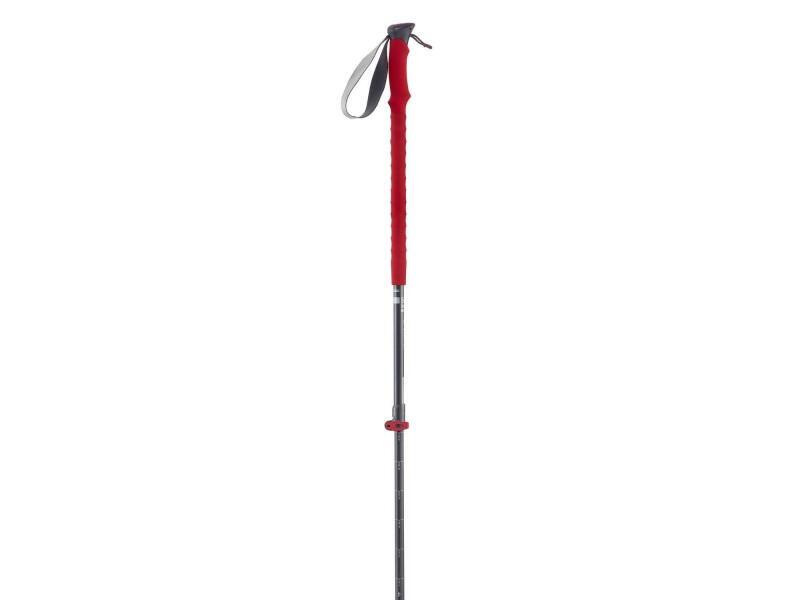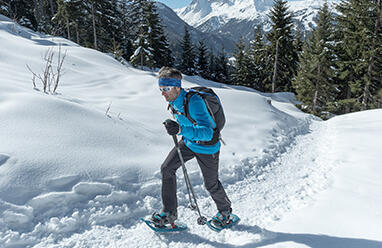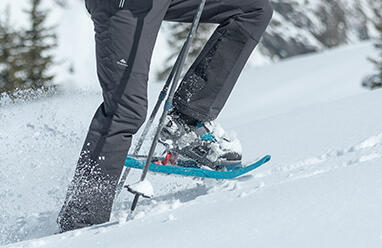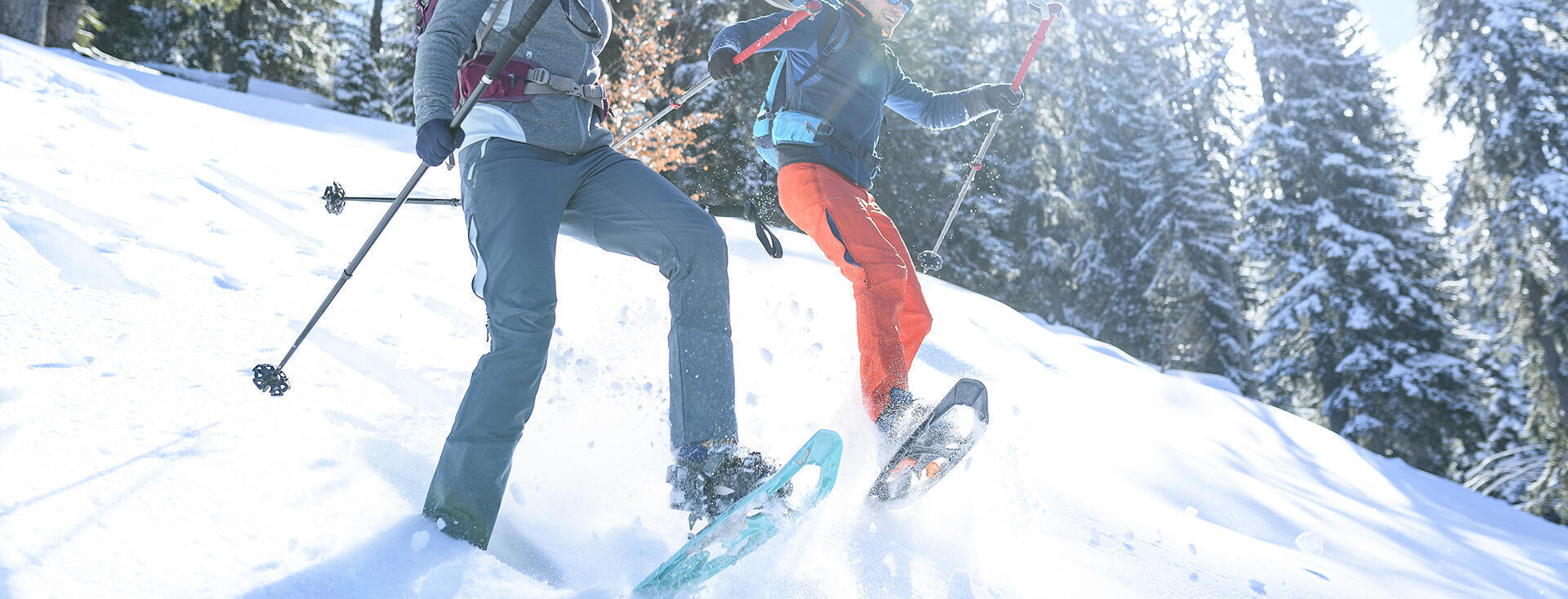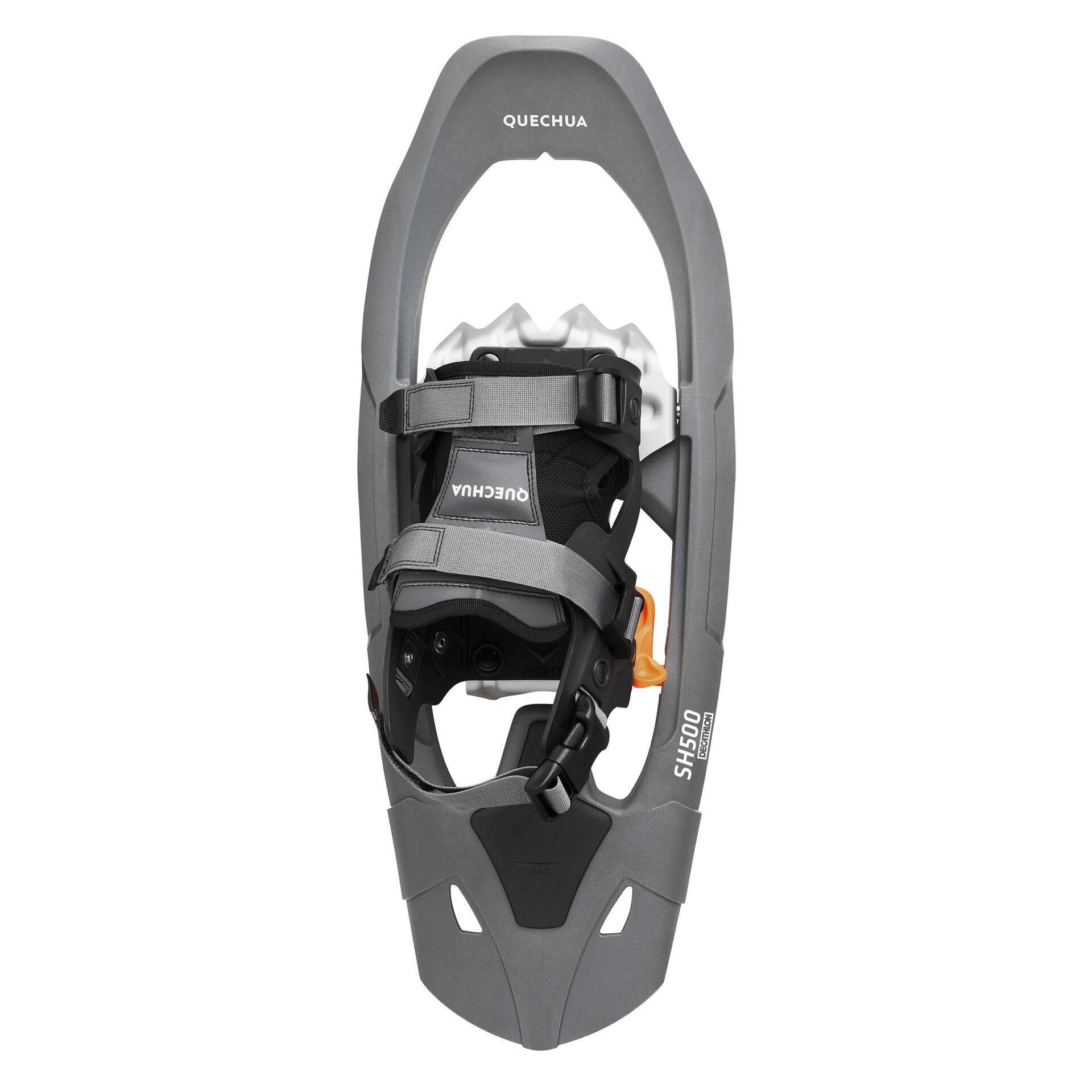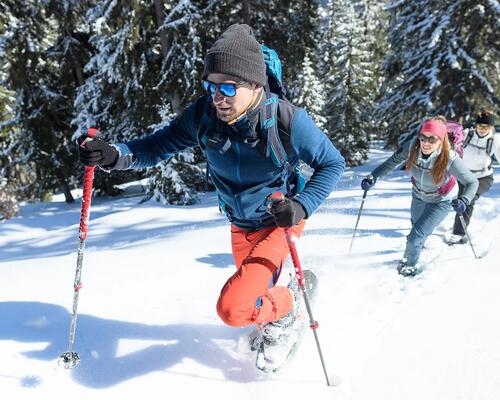2/ Using a pair of poles
For more balance, we strongly advise you to take a pair of poles with you. Especially if you plan to evolve on relief, some of which can be slightly steeper, or in powder where you risk to sink in a little more. These poles will be of great help to you in managing climbs, descents, slopes and passages of small obstacles (such as possible fences).
The poles must be fitted with winter "baskets", that is to say a large basket, to give you better lift in the snow and therefore help you on your hike.

